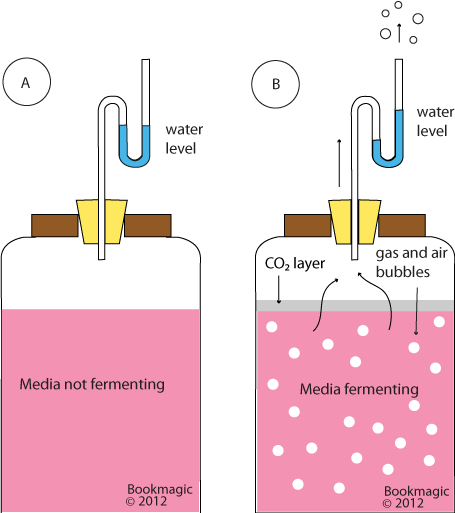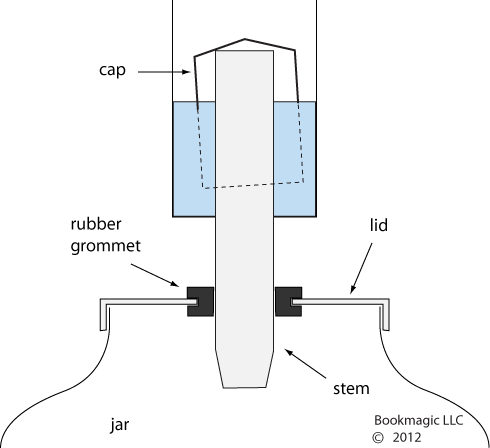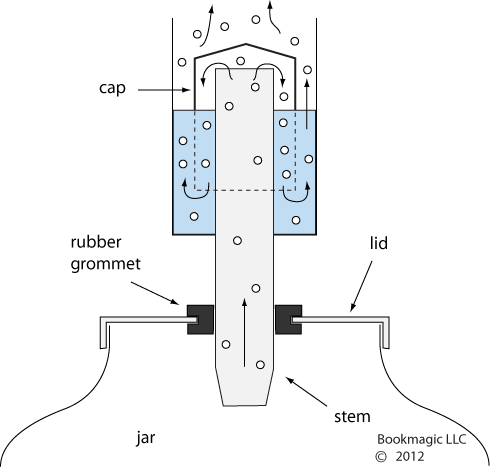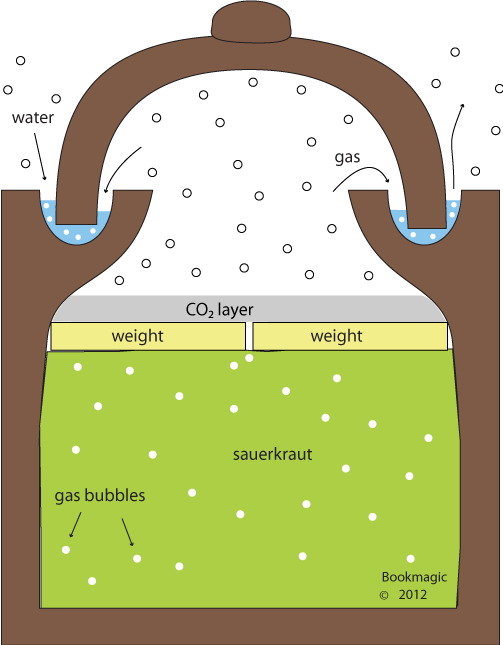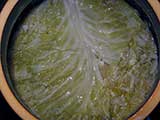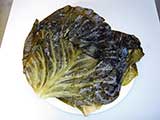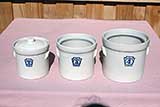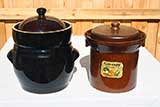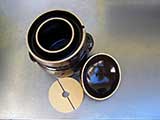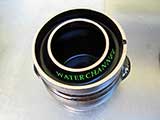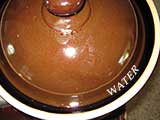Meats and Sausages
Fermenting Clay Crocks
Fermenting clay crocks and glass fermenting jars are based on the same principle that has been used for centuries to ferment wine. In both cases the water separates the contents of the container from the outside air.
Clay crocks - water channel is filled with water
Glass jars - a simple, inexpensive tube of glass known as an "air lock" performs the same duty.
Air Lock Principle
The airlock is an absolutely wonderful device. It has been instrumental in making wine for centuries. It is made from plastic, costs about one dollar and it works perfectly. An airlock is a small amount of water that physically separates the inside of a fermenting vessel from the outside air. The air creates problems during fermentation as it promotes mold development. Decomposing cabbage contains nutrients and water that bacteria and molds consume, but molds need the air to survive. Cut off the air supply and you will kill the molds. Kill the molds and the sauerkraut will be perfect every time.
Drawing A - There is no fermentation taking place when freshly cut sauerkraut or fruit are placed inside of a crock. The pressure inside the crock equals the pressure on the outside of the vessel. We have an equilibrium state. This is demonstrated by the same water level on both sides of the U-tube, which in our case is a part of the air-lock.
Drawing B - Bacteria need some time, usually a few hours to spring into action. They break sugar into lactic acid and produce CO2 gas. As the gas volume increases it produces higher pressure inside of a crock. This expanding gas travels up the tube and pushes the water level up as can be seen in a U-tube. The beauty of design lies in the fact that the expanding CO2 gas pushes out any air that resides above sauerkraut. Thus, the raising bubbles which can be seen in the U-tube are a mixture of air and CO2, which is a soda gas. After a while there is no more air present and only gas escapes away. The absence of air prevents yeasts from growing and becoming slime on the surface. The vessel is pressurized and the lower pressure outside air can not enter the air-lock and the crock. Even when the fermentation stops, the outside air can not travel through the water in the air-lock. Of course removing the lid equalizes the pressure on both sides, but if the fermentation is still ongoing, this air will be pushed out again. For those reasons the lid should be removed as little as possible during fermentation.
The Water Channel Fermenting Crock Principle
The principle is based on water separating the inside of the vessel from the outside air. It has been used for centuries in wine fermentation where a simple, inexpensive tube of glass known as an "air lock" performed the trick.
Water channel clay fermenting crock is a maintenance free device as long as the water is present in a channel. This crock produces a top quality product. Water of course evaporates, so it must be added when needed.
Lactic acid bacteria break sugar into lactic acid and produce CO2 gas. As the gas volume increases it produces higher pressure inside of a crock. The expanding CO2 gas pushes out any air that resides above sauerkraut. A mixture of air and CO2 (soda gas) is pushed through the water channel. After a while there is no more air present and only gas escapes away. The absence of air prevents yeasts from growing and becoming slime on the surface. The vessel is pressurized and the lower pressure outside air can not enter the crock through the water channel. Even when the fermentation stops, the outside air cannot enter the fermenting crock. Of course removing the lid equalizes the pressure on both sides, but if the fermentation is still ongoing, this air will be pushed out again. For those reasons the lid should be removed as little as possible during fermentation.
Make note that CO2 (soda gas, carbon dioxide) is heavier than air. After a while there will be a layer of CO2 on top of sauerkraut, further protecting it from the air. If, for any reason, you need to remove the cover and inspect the sauerkraut do it carefully. Don't mix or stir sauerkraut as this will damage the CO2 layer and will introduce air into the sauerkraut.
The sauerkraut pictured below was fermented in a Polish fermenting crock for two months and there was no trace of slime on the surface. It was checked again two months later and the result was the same, no trace of slime. After six months the sauerkraut was removed, portioned in smaller containers and placed in a refrigerator.
Commercially produced fermenting crocks are usually made from baked clay.
The main advantage of German Harsh crock and Polish fermenting crocks is that the water channel creates a barrier between product and the outside air. Carbon dioxide gas (soda gas) is created during fermentation and it pressurizes the inside of the crock. Carbon dioxide and air escape from the crock through the water channel. The outside air is at the lower pressure and cannot get inside the crock. As the result there is no air available to any yeasts or molds that might be inside and there is no white foam on top of the product. The lid is not removed during fermentation and only water is periodically added to the water channel. We have kept sauerkraut undisturbed for 3 months after fermentation stopped and the quality was superb. If a crock is left unattended for long time and all channel water evaporates away, the advantage of the design is gone as the outside air will sip in. Clay fermented crocks come with split clay weights.

